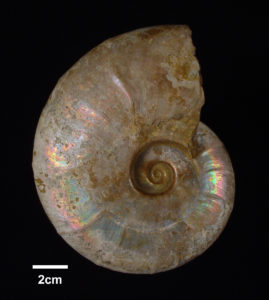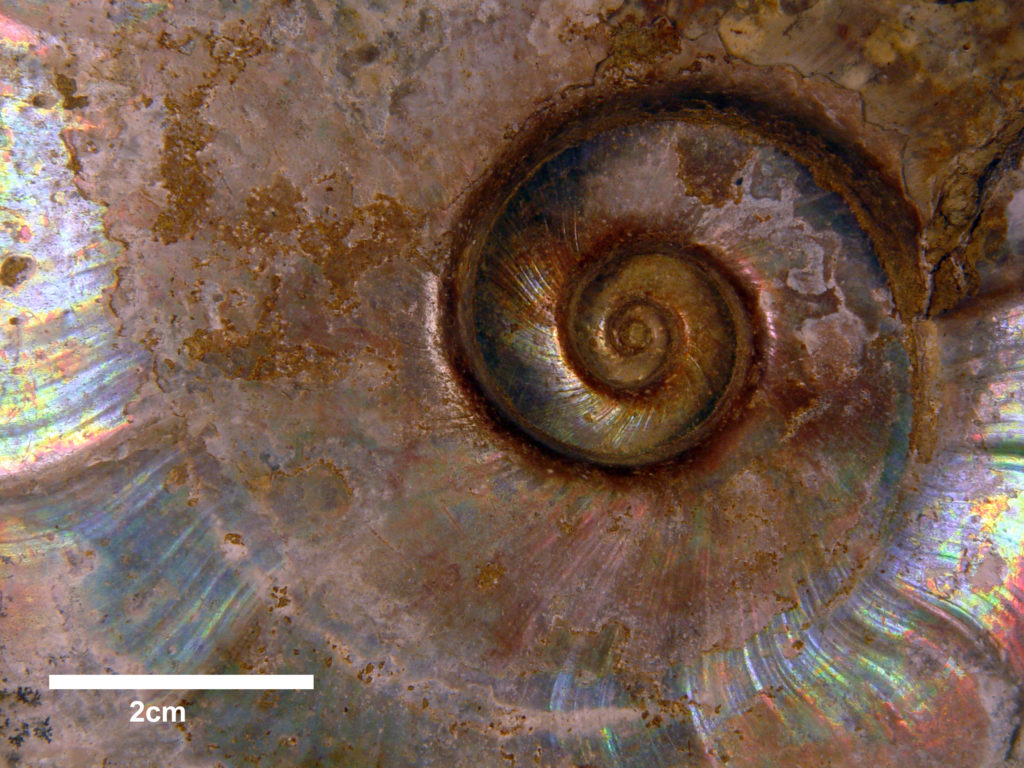Ammonite

The shell of this ammonite from Madagascar catches the eye brilliantly by its excellent preservation. It still shows parts of the original calcareous shell, the nacre. The shine is awesome, the surface is glimmering reddish, greenish and blueish. The specimen consists of the chambered part of an ammonite shell with a diameter of 155 mm. In life this part of the shell was filled with gas and liquids to give the animal buoyancy. The body chamber in front of this part contained the animal itself, it is not preserved in the present specimen.
Preparation, stratigraphy and locality details
These fossils from the Cretaceous of Madagascar found their way into collections leaving the country not before the locals had begun to strengthen their digging activities and started to trade ammonites with nacreous shells in 2001. The export of unprocessed material, like gems, minerals and rocks, out of Madagascar is forbidden by law (Richter 2002). These rules have been put in place by the government to keep at least some of the benefits from exporting the natural resources of the country in Madagascar. Many specimens show a polished shell surface for that reason and to cause a reddish shimmer. This type of “amelioration” is not suitable for scientific purposes, since it wipes out the growth lines as well as the ornamentation of the shells (ribs, tubercles).

The nacreous ammonite from Madagascar can be determined as Beudanticeras ambanjabense, a species described by Collignon (1963). Stratigraphically it comes from beds deposited at the very end of the Lower Cretaceous, the Lower Albian.
References:
- Collignon, M. (1963): Atlas des fossiles caractéristiques de Madagascar (Ammonites). X (Albien). – Service Géologique Tananarive, Tananarive, XV+184.
